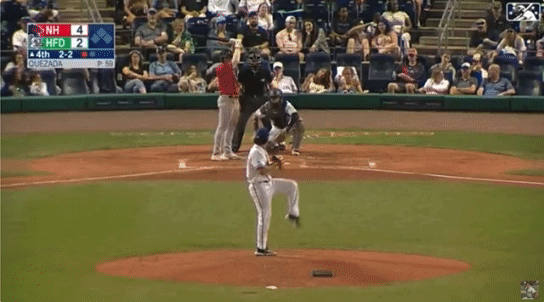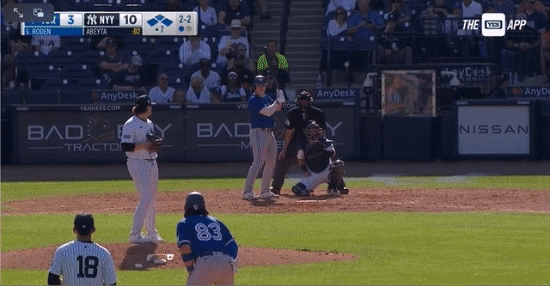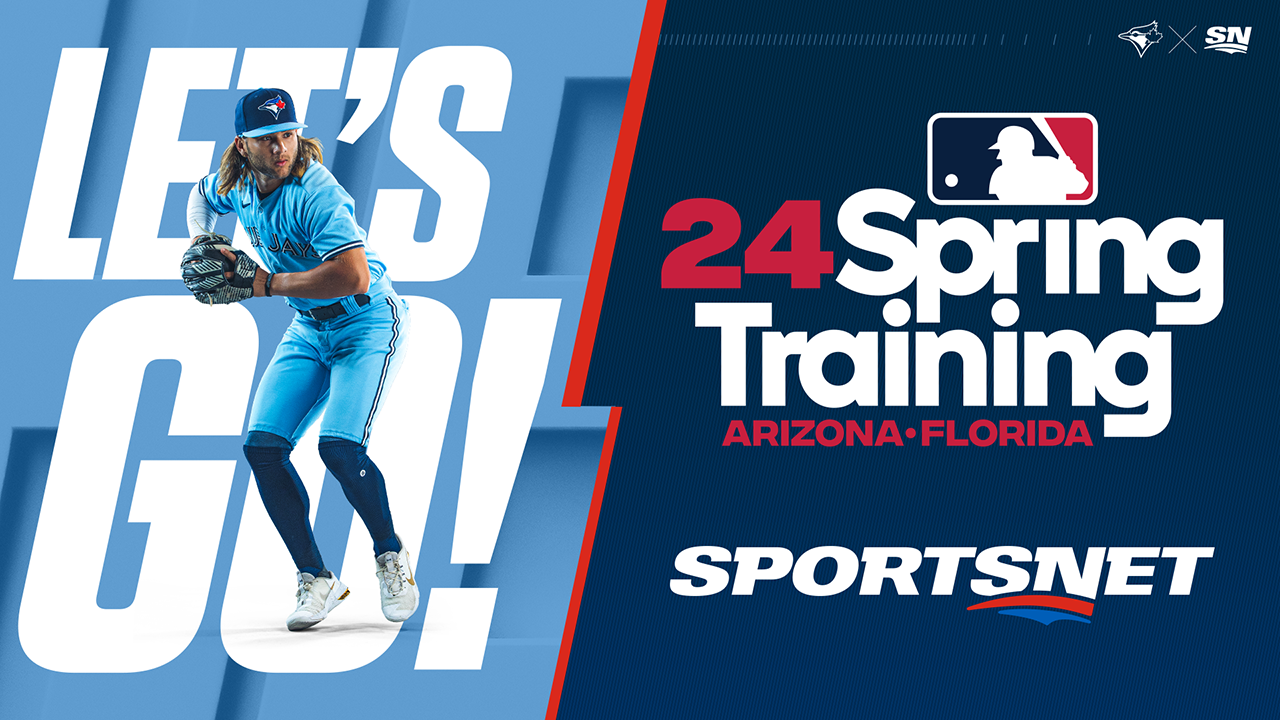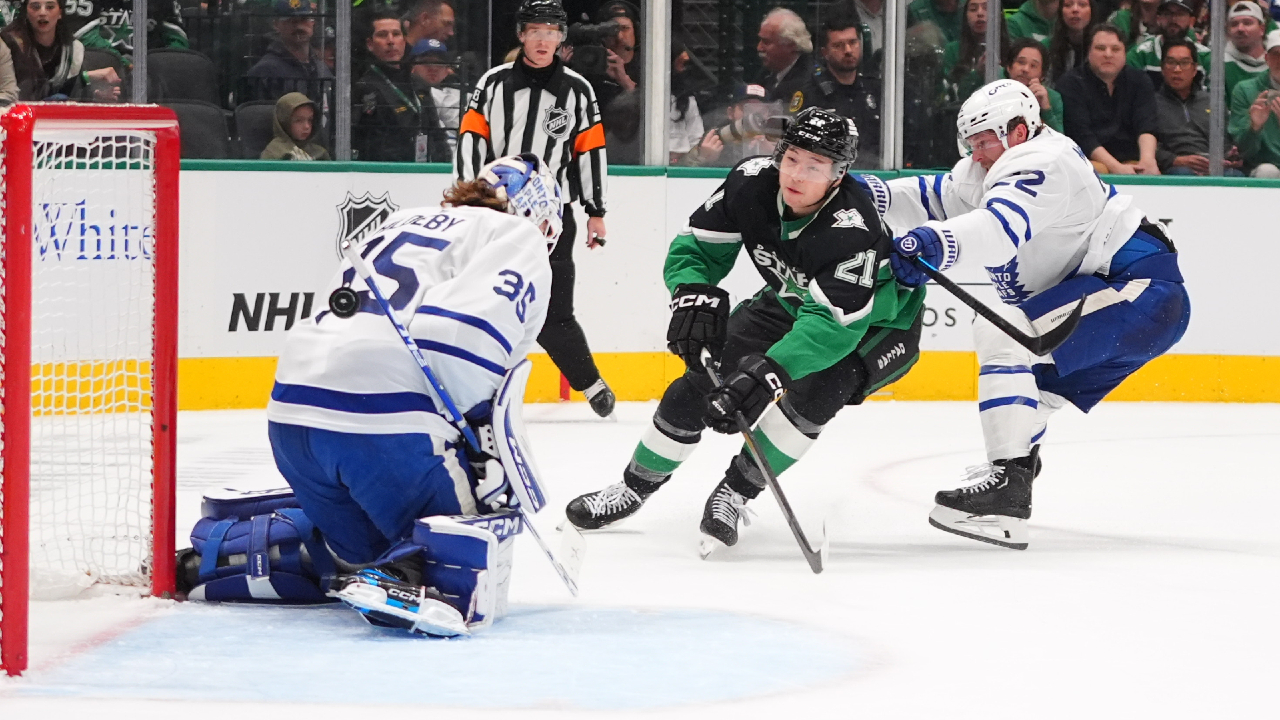
DUNEDIN, Fla. — Last season, as Alan Roden crushed pitchers at advanced-A Vancouver and double-A New Hampshire, the Toronto Blue Jays outfield prospect employed a pretty unique batting stance — body upright, hands up by his head, bat horizontal to the ground.
This is how it looked …
This spring, however, the 24-year-old reported to his first big-league camp with a significantly different look in the batter’s box.
So, why the change, especially after batting .317/.431/.459 with 68 walks against only 64 strikeouts in 115 games across two levels?
“I actually was thinking about making the change during the season,” Roden says during a conversation by his locker one recent spring morning. “Holding my hands high was basically something I just kept superstitiously because things were going well, so I didn’t want to mess with anything. But coming into the off-season, you try to look at things from an objective lens instead of, ‘All things went well so I don’t want to change anything.’
“Objectively, keeping my hands super high was a lot of extra movement.”
The balance between believing in superstition but not being trapped by it is an intriguing one for the Creighton University physics graduate, whose new stance eliminates several moving parts, cleaning up the process from set to load.
That hands-high batting stance is something Roden started using last spring training, a patch to help him break away from an old swing and set of movement patterns. Once he started seeing strong results, he was understandably reluctant to walk away from them.
At the same time, Roden recognizes the dangers of complacency and the need to continually strive for better, which is why he’s “definitely somewhere in the middle” of those two extremes.
“A superstition can take the ownership off yourself and sometimes that’s good for players mentally,” Roden explains. “But in the off-season, I had no issues to going away from it because the season is over, it’s time to continue to get better. Making changes that I think will help in the long run is always going to outweigh my superstition.”
Roden believes his new stance puts him in a better starting positing at the plate.
Rather than moving his hands twice, initially with his front leg and then again once he starts his move forward, they’re now where he needs them to be to attack. In turn, “that allows me to just be a little bit more relaxed. I don’t really have to do as much with my arms. I can be a little bit more smooth and flowy.”
Seeking such a state is why Roden’s hands came up in the first place, “a necessary step” he says in “the progression of how I’ve developed my swing and how I’ve continued to get better.”
A third-round pick in 2022, he batted .233/.374/.311 in 25 games with low-A Dunedin that summer, feeling “really stuck a lot” physically. Now that he’s freed himself up, he hopes that having his hands in a spot to create better fluidity will also lead to a flatter bat path that generates a little more damage.
The Blue Jays’ player-development staff rave about his ability to make hard contact on pitches all over the zone, but they’ve also sought ways for him to get a bit more loft on the ball so a few more line drives turn into home runs.
“My bat path was pretty steep last year, meaning I was going too direct towards the ball instead of getting on plane earlier,” Roden says. “I’m playing with the pitch a little bit earlier. Then also combining that with getting into the front side a little bit better. Sometimes I would get stuck on my back leg and that would cause me to roll over some pitches or to hit fly balls to left field. So putting it all together, I’m obviously still working on it, but I think I made some good strides and I’m looking forward to the season.”
Already he’s left an impression.
The 2024 swing shown up above came during his first spring game last Sunday, a three-run double at 100.2 m.p.h. against the New York Yankees. On Tuesday against the Detroit Tigers, he sent a hanging slider from fellow lefty Andrew Chafin over the right-field wall at 96.9 m.p.h.
Manager John Schneider has taken notice of “his plate discipline, for one,” and that “the bat-to-ball skills are pretty elite for him,” he says. “He’s a really smart kid. Understands what he’s good at, what he should be looking for, things like that. I love his demeanour. I love having conversations with him. It’s like talking to an adult, which is cool. And you have a guy with a really good idea what he wants to do at the plate.”
The Blue Jays, of course, can use hitters like that and Roden may very well end up opening the season at triple-A Buffalo. But even if he does return to New Hampshire for a brief stretch, he’ll be on the big-league radar if he continues to progress at his current pace.
For an organization that needs to start integrating young players from within to replenish a roster facing significant free-agent attrition in the next two falls, his development really matters.
The double against the Yankees was Exhibit A of all he brings to the table, tracking a borderline 2-2 slider from Blayne Abeta, dropping down to one knee to get the bat head on the ball and not trying to do too much with it, lining it hard the other way rather than weakly rolling over.
“It’s really just about trying to be athletic in the box,” Roden says of the at-bat. “I’ve always been a competitive hitter and that involves sometimes swinging, especially two strikes, at pitches that aren’t perfect pitches to hit and not striking out looking or waiting for your best pitch. That involves maybe some unorthodox ways of getting things done. But at the end of the day, it turned out to score three runs for the team and some success for myself, so I’m always going to continue to compete and to do whatever I can to put the ball in play.”
No matter the batting stance, no matter where his hands start.










